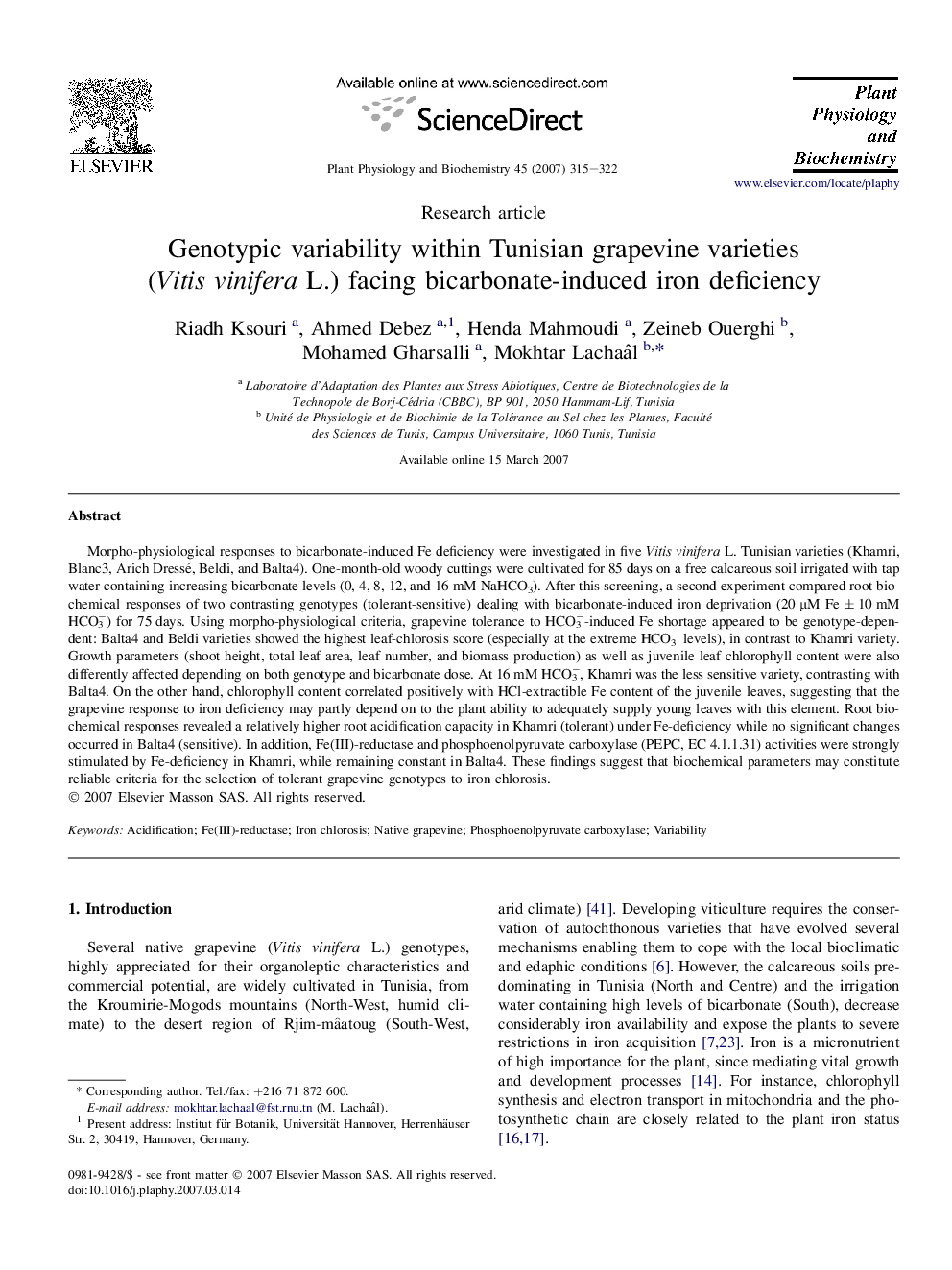| Article ID | Journal | Published Year | Pages | File Type |
|---|---|---|---|---|
| 2016838 | Plant Physiology and Biochemistry | 2007 | 8 Pages |
Morpho-physiological responses to bicarbonate-induced Fe deficiency were investigated in five Vitis vinifera L. Tunisian varieties (Khamri, Blanc3, Arich Dressé, Beldi, and Balta4). One-month-old woody cuttings were cultivated for 85 days on a free calcareous soil irrigated with tap water containing increasing bicarbonate levels (0, 4, 8, 12, and 16 mM NaHCO3). After this screening, a second experiment compared root biochemical responses of two contrasting genotypes (tolerant-sensitive) dealing with bicarbonate-induced iron deprivation (20 μM Fe ± 10 mM HCO3−) for 75 days. Using morpho-physiological criteria, grapevine tolerance to HCO3−-induced Fe shortage appeared to be genotype-dependent: Balta4 and Beldi varieties showed the highest leaf-chlorosis score (especially at the extreme HCO3− levels), in contrast to Khamri variety. Growth parameters (shoot height, total leaf area, leaf number, and biomass production) as well as juvenile leaf chlorophyll content were also differently affected depending on both genotype and bicarbonate dose. At 16 mM HCO3−, Khamri was the less sensitive variety, contrasting with Balta4. On the other hand, chlorophyll content correlated positively with HCl-extractible Fe content of the juvenile leaves, suggesting that the grapevine response to iron deficiency may partly depend on to the plant ability to adequately supply young leaves with this element. Root biochemical responses revealed a relatively higher root acidification capacity in Khamri (tolerant) under Fe-deficiency while no significant changes occurred in Balta4 (sensitive). In addition, Fe(III)-reductase and phosphoenolpyruvate carboxylase (PEPC, EC 4.1.1.31) activities were strongly stimulated by Fe-deficiency in Khamri, while remaining constant in Balta4. These findings suggest that biochemical parameters may constitute reliable criteria for the selection of tolerant grapevine genotypes to iron chlorosis.
